Princely Acquisition of Koregaon Park, Poona
Written by : Amita Roy
Dated: August 14,2018
Share
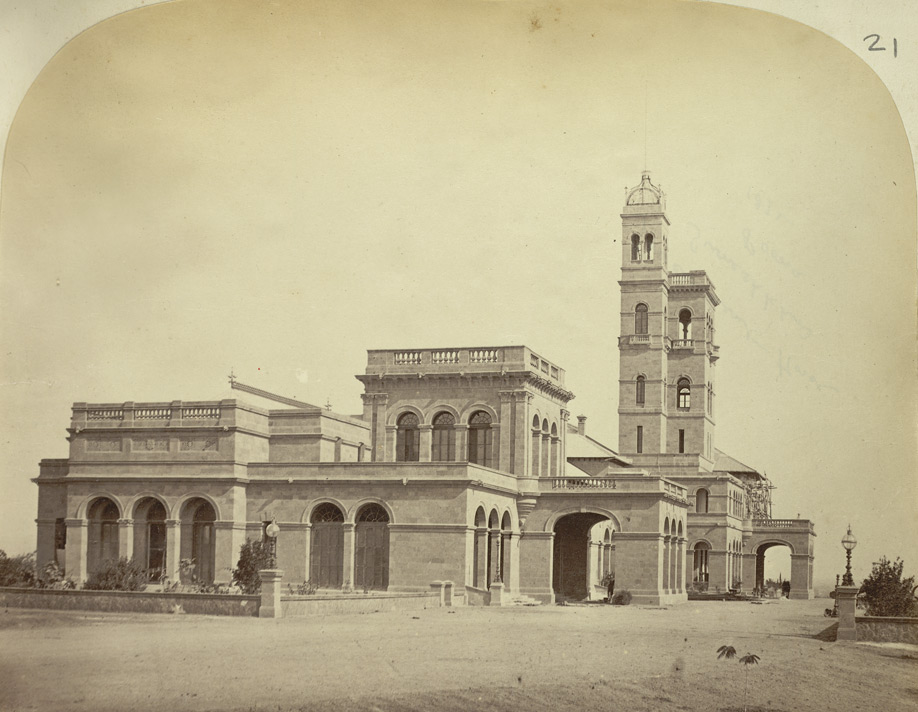
Poona Cantonment in 1870s / British Library
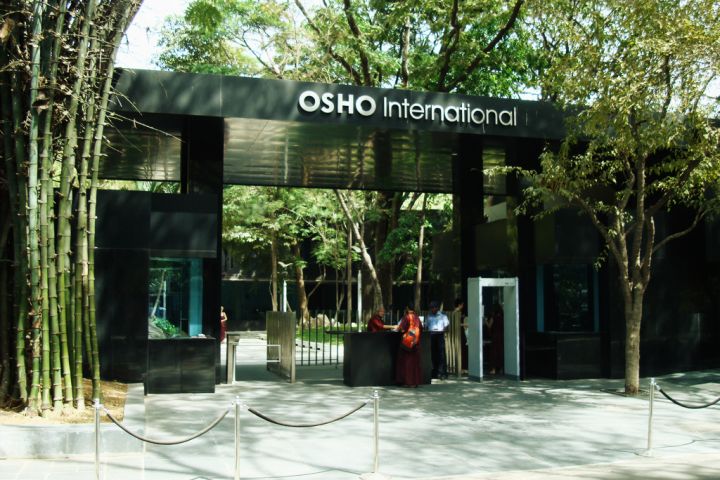
Osho Ashram in Koregaon Park / Wiki
In the late 1980’s, yesteryear actor Late Vinod Khanna made news on Page 3 and all gossip columns of almost every society and film magazine because of his joining of Osho Rajneesh’s spiritual ashram in Pune. The ashram which is standing even today in Pune is located in Koregaon Park, the most upscale neighborhood of the city and also the prized commercial zone of present day Pune.
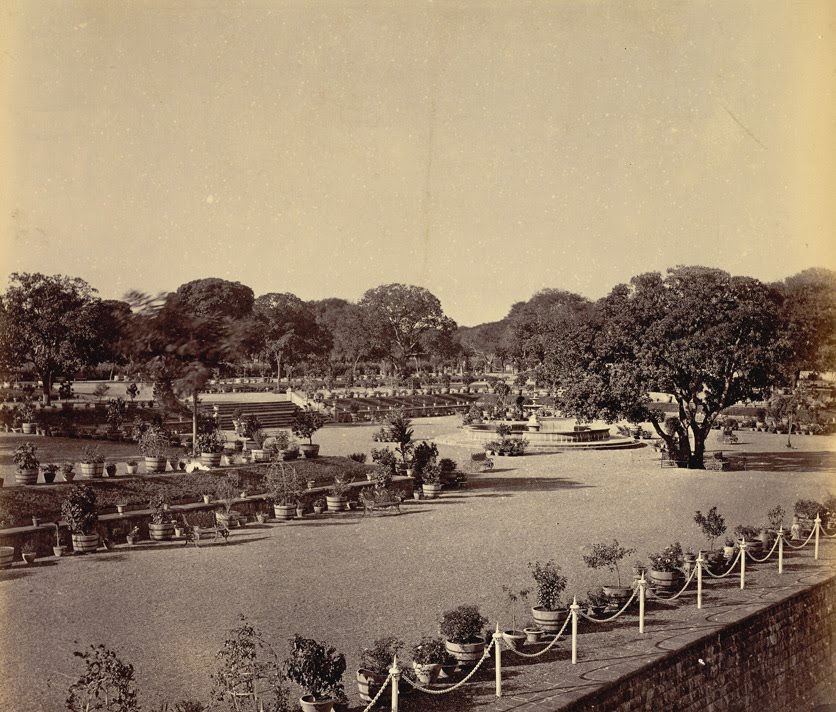
Bund Garden Road in 1870's Poona / British Library
Poona, the former capital of Chhatrapati Shivaji Maharaj and the Peshwas was occupied by the British Army since 1817 onwards. The British Army established two military cantonments. One was the Poona Cantonment and the other was the Kirkee or Khidki Cantonment. While Poona Cantonment had civilian pockets, but Khidki Cantonment was more military and had an ammunition manufacturing factory.
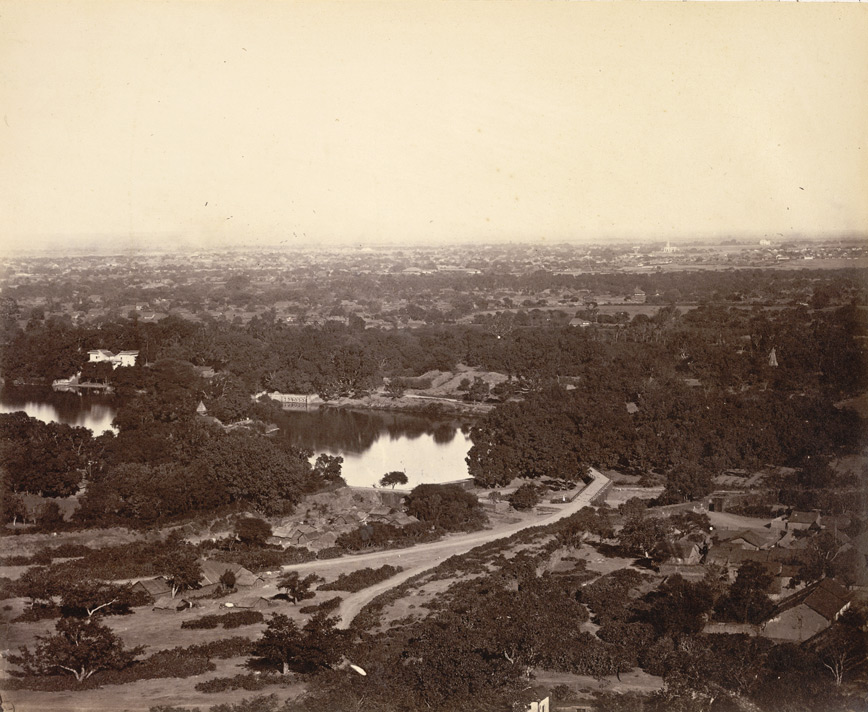
Poona Cantonment from Parvati Hills in 1860's /British Library
In 1922, the Govt of Bombay Presidency decided to establish Koregaon Park Estate in a planned way which was just after World War 1 within Poona Cantonment. Koregaon Park came up between railway line in the south and Mula –Mutha River in the north. A set of specific rules and regulations were established for outright purchase or lease which should be abided by the purchaser or the lessee. The estate was divided into various numbers of plots, many of which were auctioned and purchased mostly by rich merchants or princely families. Some specific plots were also kept reserved for the Military and Postal Department.
.jpg)
Map of Koregaon Park /Wiki
But in what were the terms and conditions required for acquiring plots in British Poona in Koregaon Park Estate?
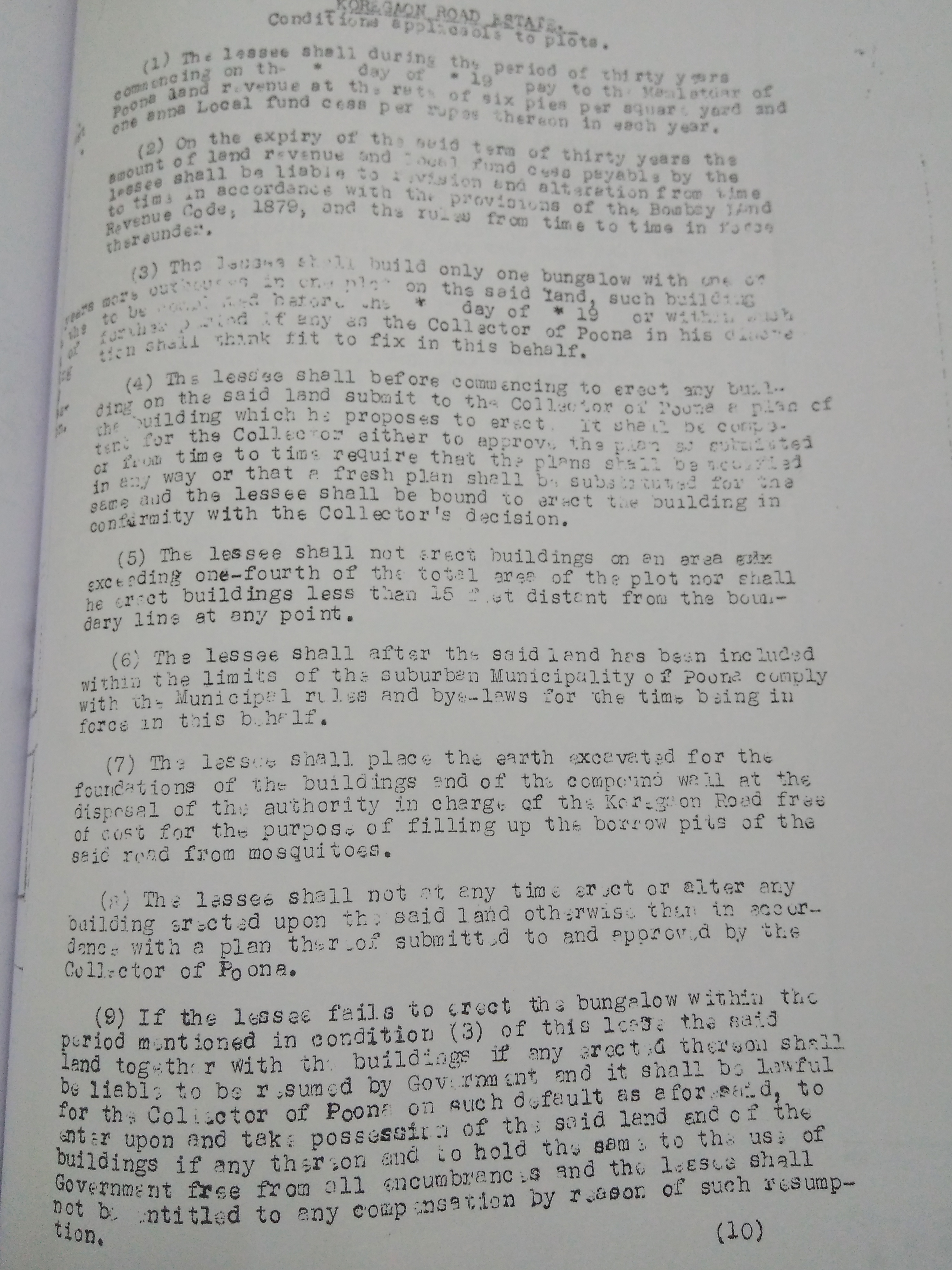
Terms and Conditions set by the Govt of Bombay to acquire land in Koregaon Road Estate .
The following was the condition applicable for plots –
1. The lessee shall during the period of thirty years commencing on the * day of 19- pay to the Mamlatdar of Poona land revenue at the rate of six pies per square yard and one anna local fund cess per Re thereon in each year.
2. On the expiry of the said term of 30 years, the account of land revenue and local fund cess payable by the lessee shall be liable to revision and alteration from time to time in accordance with the provisions of the Bombay Land Revenue Code 1879 and rules from time to time in force thereunder.
3. The lessee shall build only one bungalow with one more outhouse on the said land or within further period, if any as the Collector of Poona in his capacity shall think fit to fix in this behalf.
4. The lessee shall before commencing to erect any building on the said land submit to the Collector of Poona a plan of the building which he proposes to erect. It shall be competent for the Collector either to approve, the plan as submitted or from time to time require that the plans shall be accepted in any way or that a fresh plan shall be substituted for the same and the lessee shall be bound to erect the building in conformity with the Collector’s decision.
5. The lessee shall not erect buildings on an area exceeding 1/4th of the total area of the plot nor shall he erect buildings less than 15 ft distant from the boundary line at any point.
6. The lessee shall after the said land has been included within the limitsof the suburban Municipality of Poona comply with the Municipal Rules and the bye lawsfor the time being in force in this behalf.
7. The lessee shall place the earth excavated for the foundations of the buildings and of the compound wall t the disposal of the authority in charge of the Koregaon Road free of cost for the purpose of filling up the borrow pits of the said road from mosquitoes.
8. The lessee shall not at any time erect or alter any building erected upon the said land otherwise than in accordance with a plan there of submitted to and approved by the Collector of Poona.
9. If the lessee fails to erect bungalow within the period as stated in terms and conditions, the said land together with the buildings if any erected thereon shall be lawful for the Collector of Poona on such default as aforesaid, to enter upon and take possession of the said land and of the buildings if any thereon and to hold the same to the use of Govt free from all encumbrances and the lessee shall not be entitled to any compensation by reason of such resumption.
Beside these terms and conditions, there were other important conditions that the Govt of Bombay had imposed on the princely families and that on rich merchants if they wanted to acquire land for residential purposes.
1. No transfer of this property will be affected nor any encumbrance on it created without the previous consent of the Govt of Bombay.
2. A responsible agent will be appointed in the locality in which the property is situated, to answer the authorities in case of need;
3. The property will not be used without the previous consent of the Govt of Bombay for purpose other than residential.
Seeing and analyzing all these T&Cs, many princely or royal families indeed invested in huge chunks of land. Now it’s a question of curiosity who owned the maximum tract of land in Koregaon Road Estate.
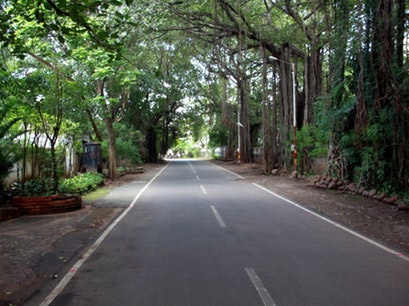
A road in Korgaon Park .
As Koregaon Park was located within the confinement of Poona Cantonment, it was during the WW2, that records of the dealings of some of the biggest plots came to the fore front where the British Govt of Bombay felt the requirement of space to fulfill the military requirements due to the ongoing war.

Maharani of Baroda Chimnabai Gaekwar / National Portrait Gallery, UK
From the Govt records of that era, it comes across that Maharani of Baroda, Chimnabai Gaekwar owned the maximum amount of land. She owned a total of 6 acres which comprised of plots nos 81, 82, 119 and 120. Prince Udaysinhrao Gaekwar owned the plot no 121. Later Maharani Chimnabai wanted to acquire plots no 112 and 113 but the Govt was in a fix whether or not to give the consent. This was 1943.
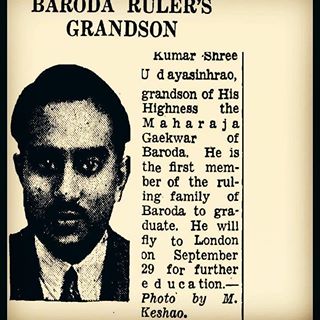
Prince Udaysinhrao Gaekwar who owned plot no 121 in Koregaon Park / Amita Roy
Plot no 1 was owned by royal family Jamkhandi and plot no 67 was owned by Jawhar. Plot nos 94 to 103 was requisitioned by the military. Plot no 75 was taken by R A Dubash.
In 1944, plot nos 43, 53, 54, 59, 60, 61, 91, 110, 111 were put up for auction by Collector of Poona and the price was fixed at Rs 1.8 per yard minimum. Out of these, plot nos 59 and 60 were taken by royal family of Idar. Later in 1945, Maharaja of Baroda Pratapsinhrao Gaekwar who being the head of Baroda royal family, expressed his wish to acquire plot nos 55-56 which were owned by one Mr H S Captain. Govt of Bombay had their reservations of providing further land acquisition to Baroda royal family as they had already exceeded their cache but the Resident of Poona convinced the Bombay Govt that the acquisitions made by Maharani Chimnabai Gaekwar is different from the Maharaja of Baroda as they are separate collateral though near branches.
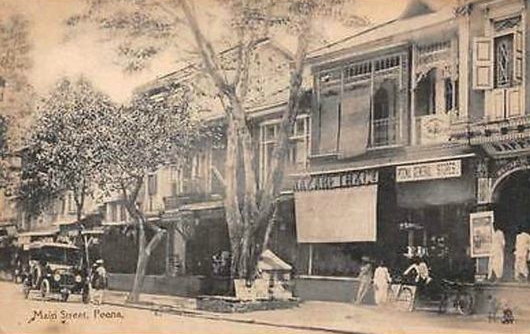
Main Street , Koregaon Park, Poona in 1930's. / Delcampe
Most of these huge tracts of plots acquired by the princely families were converted into beautiful serene bungalows. But with modernization and increasing costs of maintenance of these properties, many of these prime tracts of land were either sold by the families or been reconverted into commercial place. Some still have maintained their serene opulence in the midst of commercial humdrum. Therefore, much before Osho and 5 star spots, it was the royal splendor that created the much polite and polished Koregaon Road Estate.
